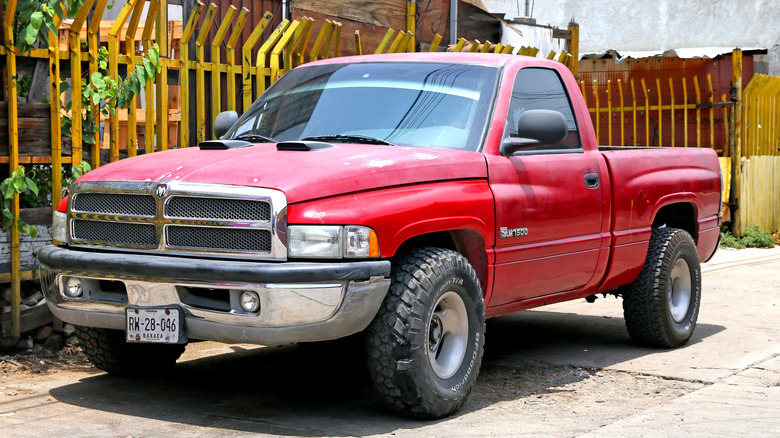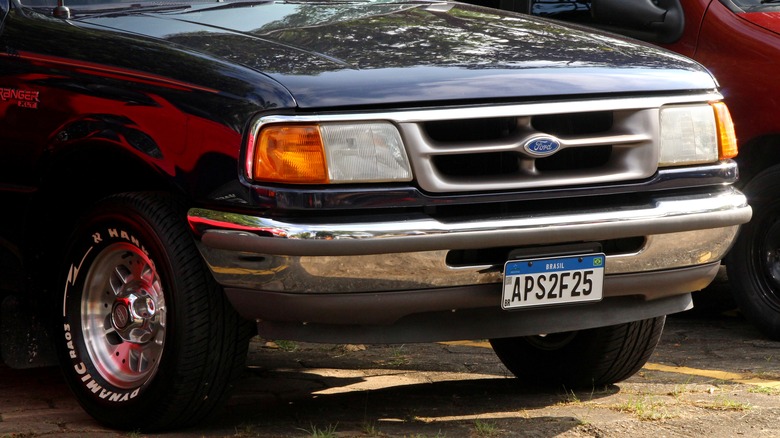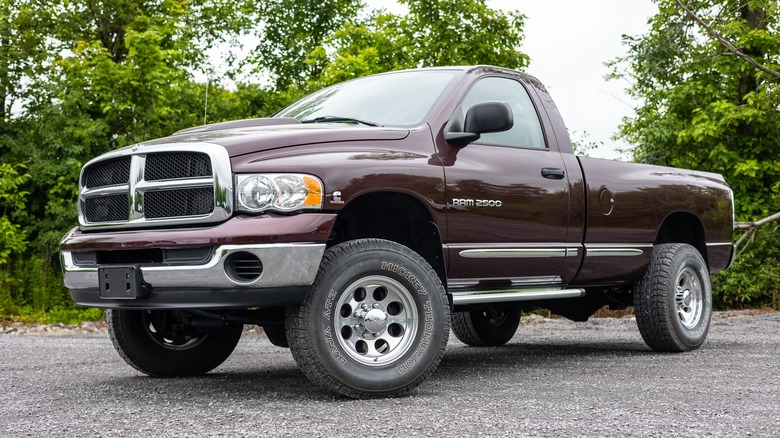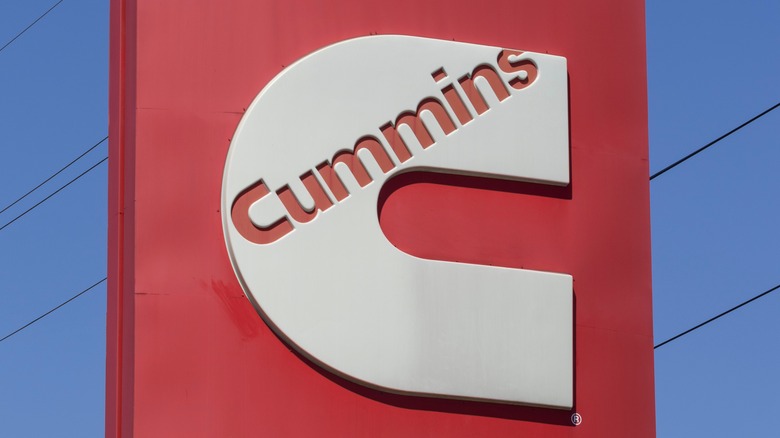Cummins 4BT Vs. 6BT Engines: What's The Difference?
If you're looking at the Cummins 4BT and 6BT engines for a potential swap, there are a few things you need to know. Right off the bat, both of these are formidable diesel engines, so no matter which one you opt for, you're getting something powerful and reliable — and they paved the way for one of the most reliable diesel engines ever made in the 6.7L Cummins Turbo Diesel. On the surface, both the 4BT and 6BT share a lot of similarities, and their low-end torque make them very solid performers for off-roading.
Of the two, the 6BT offers more performance, something that you'd expect given the fact that six is higher than four after all. Despite that, performance seekers can't just opt for a 6BT and pop it into their vehicle as there are limitations that could prevent that from happening. Size is a big factor as you're not going to force an engine into a vehicle that's not fit for it. That alone could lead you down the path to the smaller 4BT, but even though you'll be taking a performance hit as a result, the 4BT is still a fine choice.
What is the Cummins 4BT diesel engine?
As the smaller of the two Cummins engines, the 4BT comes in at a length of 30.6 inches and between 745 and 782 pounds compared to the larger 35-inch, 1,100-pound 6BT. This does leave many people stuck with choosing the 4BT due to size constraints, but that engine comes with a couple disadvantages that might not be immediately apparent. The 4BT engine is the more expensive of the two considering it's becoming rarer as the years go by. It's also going to be a noisy engine compared to newer diesels because of its age.
The four-cylinder 3.9L engine can produce between 75 and 110 horsepower, and it's a reliable and durable engine if you can get your hands on one. The smaller size makes it a good fit for vehicles like the Ford Ranger and Chevrolet Blazer as well as other vehicles where you're looking to upgrade their off-road performance. For vehicles that can house a bigger engine, you can take advantage of the larger and more powerful Cummins 6BT as it is the clear winner in most areas between the two.
What is good about the Cummins 6BT diesel engine?
The Cummins 4BT might be a powerhouse, but the 6BT is the cream of the crop. It was included in Dodge Ram trucks from 1989 to 1998, and much like its 4BT counterpart, the 6BT was a strong off-road performer thanks to its low-end torque. Despite being out of production for more than two decades, the 6BT is still widely available due to the sheer number of Rams that were produced over that time period. As a cherry on top, every generation of the engine is a good choice for a swap.
Performance of the 6BT varies by the production year, so that'll be something to consider before picking one up. Between 1989 and 1993, you'll typically find 160 horsepower at 2,500 rpm, but things get interesting from there. From 1994 to 1995, it could squeeze out an additional 15 horsepower with a manual transmission at 2,600 rpm, and then big gains were made between 1996 and 1998 — 180 hp at 2,500 rpm for automatic and 215 horsepower at 2,600 rpm for manual. In 1998 the engine grew from 12 valves to 24 and its name was changed from 6BT to ISB.
If you're comfortable with modifications, you can get up to 800 horsepower on the 6BT, but you'll run the risk of wearing out the stock parts quickly if you go much higher. No matter the case, the 6BT has a lot more power than the 4BT.
What engine is best for you?
For people with the space in their vehicles, it's clear the 6BT is ultimately the better engine between the two. It's easier to track down than a 4BT, so you're already being steered in a certain direction. In many scenarios, the weaker engine would typically be the cheaper one, but that's not how it's trending with these two engines. That doesn't mean you can't still find good prices on a 4BT, but it can be tough.
There are still some situations where the 4BT comes ahead, however. The 4BT has better fuel economy, so if you don't need to chase the highest horsepower this could be a nice trade-off. But you'll want to make sure the vehicle you're dropping the engine into isn't too heavy or else you won't notice the benefits.
One final thing to consider is that since the 6BT is easier to find, it will also be easier to find replacement parts for it too. Keep in mind both these engines are decades old, so you'll need to find one in good condition because there's no guarantee that one you pull out of a junkyard will be a great pick.



